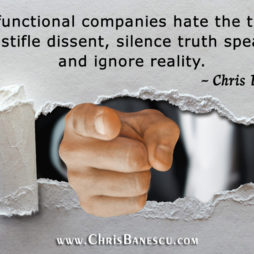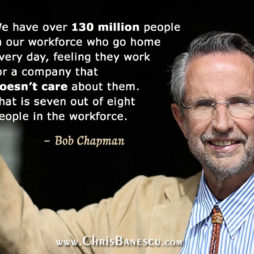 by Roger Martin –
by Roger Martin –
In my latest book, Fixing the Game: Bubbles, Crashes, and What Capitalism Can Learn from the NFL, I wrote about the negative impact of executive stock-based compensation on corporate short-termism. Eliminating stock-based compensation would help reduce the incentive for executive leadership to focus on the short term. But there is a residual problem which has long frustrated me. The answer finally popped into my brain (funny how that works). As usual, the solution won’t be easy to pull off (but that has never stopped me).
The residual problem I’m talking about is corporate short-termism. Many companies face quarterly or even more immediate pressure from their shareholders (increasingly made up of hedge funds, program traders, and day traders) to deliver short-term performance. Worried that short-term-oriented arbitrageurs will put their company in play and short-term-oriented shareholders will gain majority or effective control of the company, ending their ability to steer the long-term trajectory of the company, they focus on making short-term decisions to protect their positions. The paradoxical result is that they never get around to taking those long-term-oriented decisions.
To solve this problem I needed to focus on the time value of the capital. The value of capital is (obviously) related to time: if I loan you a dollar to use for a week, it is worth more to you than if I give it to you for a day. You will be willing to pay more for the capital for a week than for a day, probably something approximately seven times as much.
For corporations to make the required long-term investments in production, marketing, etc., they need capital to use for years, not days, at a time. So capital that is provided to them for a short period is worth less to them then capital that is provided to them for a long time. If an investor buys a share and holds it for 10 years, it is worth more to the company than a day trader who buys a share one day and sells it the next.
It follows that companies should value shareholders relative to both the volume of shares they hold and the length of time they have held their shares. A huge hedge fund that buys 2% of the shares of the company but holds them for two days is worth less to the corporation than a long-term investor that holds a fraction of 1% of the shares for a decade.
Since the value is in direct proportion to the time held, it is easy to calculate the value and then the frame-breaking thing to do is to assign voting rights based on that value. (I wouldn’t alter economic rights; each share would own the same share of the company; but I would calibrate the voting rights.) The voting rights associated with each share would be that share times the number of days it has been held by that shareholder. So if a shareholder buys 1 share and holds it for ten years, he/she votes 3,650 shares. If a day-trader or risk arbitrageur buys a share and holds it for a day, he/she votes 1 share.
In the case of a potential takeover, if the takeover arbitrageurs buy up (say) 30% of the shares of the company in anticipation of making a quick buck by pressuring or forcing the company to agree to be taken over, instead of being able to swing 30% of the vote, they might be able to swing 3% of the float. In order for the takeover to succeed, the longer-term shareholders would have to see the takeover being in their interest too. And they may; preventing takeovers is not the issue. Having takeovers proceed only if the longer-term shareholders feel it is appropriate is the goal.
This would enable the company management to focus to a great extent on the long term without threat of the short-term investors controlling its destiny. But it still maintains the discipline of long-term investors. If they aren’t satisfied, they can bring more voting power to bear than any risk arbitrageur.
A time-based voting system would also help generate a more productive way to think about shareholder value creation. At present, shareholder value (per share) is assumed to be best represented by the current share price. Hence shareholder value creation is defined as the increase from the current share price to a new, higher share price (with dividends assumed as reinvested).
This creates a managerial problem for companies with overvalued stock. Let’s imagine a stock that has run up from $50/share to $90/share over the past three months based on positive early sales performance on a new product introduction. If the expectations about future performance have risen bubble-like above anything realistic, it is not possible for managers to manage or invest in a way that will meet the inflated expectations of $90/share. This often results in the management team making risky moves, which undermines the value of the shareholders for whom, ironically, the management team made the moves in the first instance.
A time-based voting system would cumulate the shares from the longest held shares to the shortest and determine the purchase price of the median share. That median purchase price (let’s assume $60/share for the above company) would define the share price on which management should feel obligated to earn a return above the cost of equity (let’s assume 10%, so $6/share). This definition of shareholder value creation would help keep management from taking extreme and risky action to earn a return on the shareholder who has just purchased the last share at the highest price. This would re-establish the focus of management on creating long-term value for the shareholders who are willing to hold their shares for the long run — a perfect match.
HT: HBR.com



